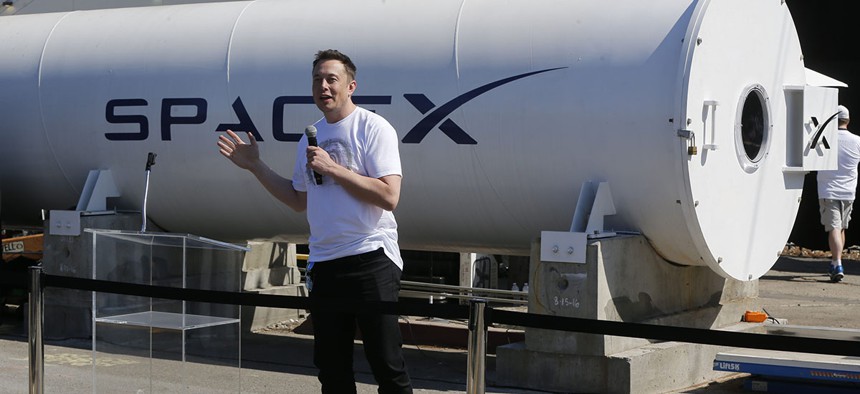China Aims to Build a Supersonic “Flying Train” That Would Put Elon Musk’s Hyperloop to Shame

Telsa CEO Elon Musk congratulates the winners of the Hyperloop Pod Competition II at SpaceX's Hyperloop track in Hawthorne, Calif., Sunday, Aug. 27, 2017. Damian Dovarganes/AP
This mode of transportation would be 10 times faster than the world’s fastest bullet train.
The Hyperloop is getting some Chinese competition.
The country’s state-run space contractor, China Aerospace Science and Industry Corporation (CASIC), announced yesterday (Aug. 30) that it has started research on a “high-speed flying train” that it says will be able to reach top speeds of 4,000 km per hour (2,485 miles per hour). That is 10 times faster than the world’s fastest bullet train (which is also in China), four times faster than commercial flights, and over three times the speed of sound (1,225 km/h).
The “flying train” is in essence a passenger pod that uses magnetic levitation and travels through a near-vacuum tube, as CASIC manager Liu Shiquan explained to Chinese media (link in Chinese). The concept is similar to that of the Hyperloop, a futuristic high-speed transportation system envisioned by Elon Musk in 2013. Western startups are now competing to reach the proposed 1,200 km/h (746 mph) speed of the Hyperloop.
Earlier this month, Los Angeles-based startup Hyperloop One, which Musk is not involved with, said its pod reached the speed of 310 km/h (193 mph) during a test. That set a record for a Hyperloop test, which was broken recently when a German team’s version hit 323 km/h (201 mph).
CASIC claims that its own version of the tube-enclosed system will be the first in the world designed for supersonic speed, though the first step will be hitting top speeds of 1,000 km/h (621 mph). Musk has suggested that future versions of the Hyperloop would travel fasterthan the speed of sound.
CASIC says it owns over 200 patents for the project. Eventually it plans to export the “flying train” to countries that are part of China’s “One Belt, One Road” infrastructure spending spree. It didn’t provide a timetable.
Of course, reaching supersonic speed too quickly could get uncomfortable. Mao Kai, chief designer of the system, said in an interview (link in Chinese) yesterday with a state newspaper that the train will ensure safety by allowing for acceleration that’s slower than civil aircraft. He dismissed concerns that the tickets will be too expensive for ordinary passengers.


